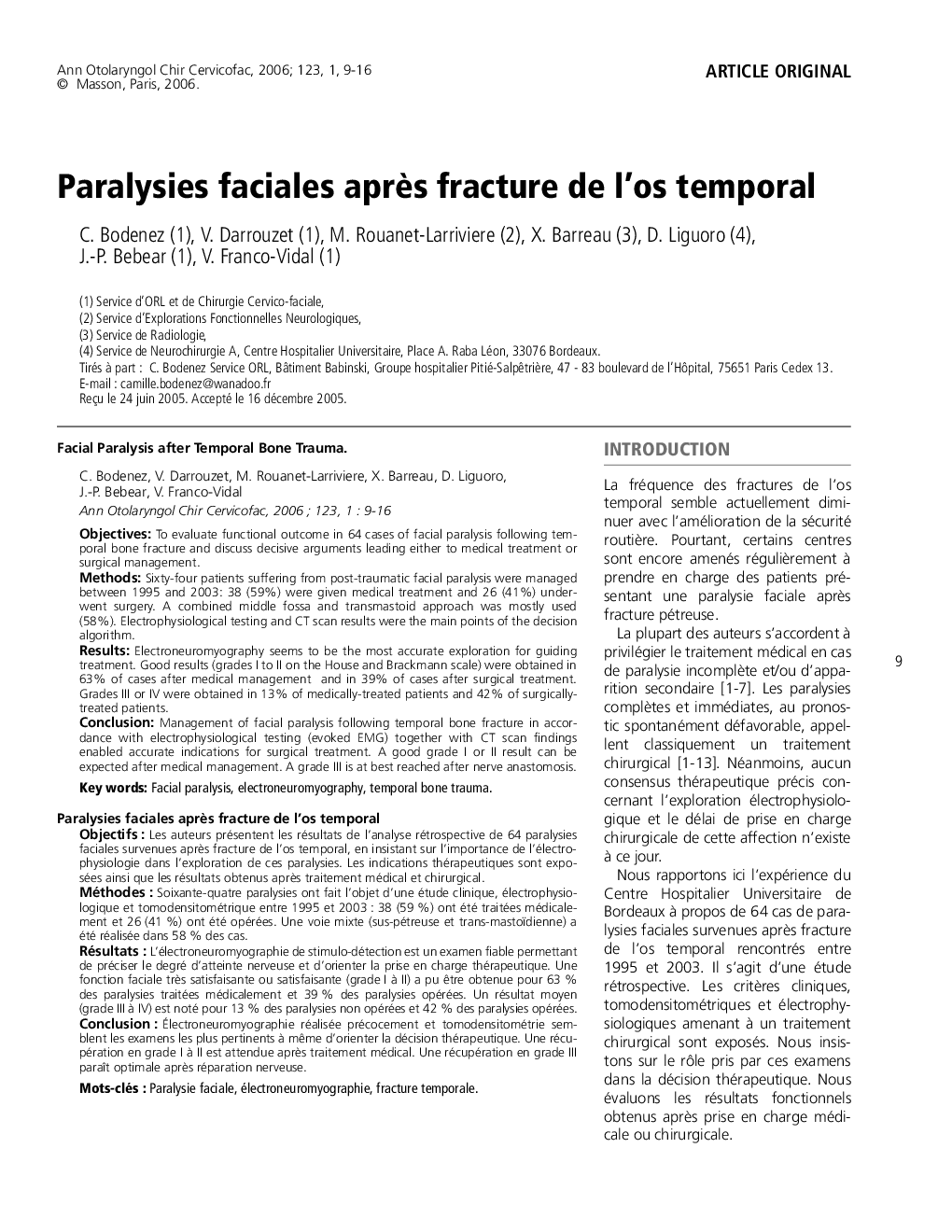| Article ID | Journal | Published Year | Pages | File Type |
|---|---|---|---|---|
| 4106002 | Annales d'Otolaryngologie et de Chirurgie Cervico-faciale | 2006 | 8 Pages |
ObjectivesTo evaluate functional outcome in 64 cases of facial paralysis following temporal bone fracture and discuss decisive arguments leading either to medical treatment or surgical management.MethodsSixty-four patients suffering from post-traumatic facial paralysis were managed between 1995 and 2003: 38 (59%) were given medical treatment and 26 (41%) underwent surgery. A combined middle fossa and transmastoid approach was mostly used (58%). Electrophysiological testing and CT scan results were the main points of the decision algorithm.ResultsElectroneuromyography seems to be the most accurate exploration for guiding.treatment. Good results (grades I to II on the House and Brackmann scale) were obtained in 63% of cases after medical management and in 39% of cases after surgical treatment Grades III or IV were obtained in 13% of medically-treated patients and 42% of surgicallytreated patients.ConclusionManagement of facial paralysis following temporal bone fracture in accordance with electrophysiological testing (evoked EMG) together with CT scan findings enabled accurate indications for surgical treatment. A good grade I or II result can be expected after medical management. A grade III is at best reached after nerve anastomosis.
ObjectifsLes auteurs présentent les résultats de l’analyse rétrospective de 64 paralysies faciales survenues après fracture de l’os temporal, en insistant sur l’importance de l’électrophysiologie dans l’exploration de ces paralysies. Les indications thérapeutiques sont exposées ainsi que les résultats obtenus après traitement médical et chirurgical.MéthodesSoixante-quatre paralysies ont fait l’objet d’une étude clinique, électrophysiologique et tomodensitométrique entre 1995 et 2003: 38 (59%) ont été traitées médicalement et 26 (41%) ont été opérées. Une voie mixte (sus-pétreuse et trans-mastoïdienne) a été réalisée dans 58% des cas.RésultatsL’électroneuromyographie de stimulo-détection est un examen fiable permettant de préciser le degré d’atteinte nerveuse et d’orienter la prise en charge thérapeutique. Une fonction faciale très satisfaisante ou satisfaisante (grade I à II) a pu être obtenue pour 63% des paralysies traitées médicalement et 39% des paralysies opérées. Un résultat moyen (grade III à IV) est noté pour 13% des paralysies non opérées et 42% des paralysies opérées.ConclusionÉlectroneuromyographie réalisée précocement et tomodensitométrie semblent les examens les plus pertinents à même d’orienter la décision thérapeutique. Une recuperation en grade I à II est attendue après traitement médical. Une récupération en grade III paraît optimale après réparation nerveuse.
